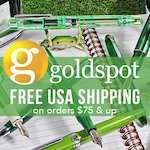(Susan M. Pigott is a fountain pen collector, pen and paperholic, photographer, and professor. You can find more from Susan on her blog Scribalishess.)
I really wanted to buy a French fountain pen on my trip to France. I tried several Waterman pens, but the nibs were scratchy and the pens were (in my opinion) over-priced. So, at La Paperterie in Rouen, France, I purchased the new Faber-Castell Ambition Blue Ocean OpArt. I'm calling it my French pen, even though it's a German brand–but I bought it in France, okay?
The city of Rouen
What drew me to this pen is its beautiful dusty-blue body with an engraved, intricate guilloche pattern. Plus, I've found Faber-Castell pens to be high-quality, and this pen does not disappoint.
The pen comes in a solid cardboard presentation box. The inner box, which contains the pen, slides out like a drawer. Faber-Castell offers a two-year guarantee on the pen.
One blue cartridge is supplied, but if you want a converter, you have to purchase it separately (which I did). The converter works well, though it is made of a rubbery sort of plastic, not the hard clear plastic I'm accustomed to with most converters.
The Blue Ocean has a resin barrel with a chrome cap, grip, and posting knob.
The pen is neither lengthy (120 mm/4.75 inches unposted) nor heavy (13 grams, unposted). Posted (159 mm/6.25 inches), the pen feels off-balance because the cap is the heaviest piece. When you put it on the posting knob the balance shifts backwards making the pen uncomfortable to use. I do not recommend posting it.
The cap exhibits the usual clean, crisp lines of Faber-Castell pens. It has a simple clip, an engraved circle on the finial, and Faber-Castell branding engraved on the side. It is subtle, and unless you look closely, it's difficult to distinguish the two knights on horses, the emblem of the company. I like subtle branding, and Faber-Castell pens always look classy in my opinion.
The nib sports the Faber-Castell emblem, decorative dots, and the nib size. It's not the most beautiful nib design I've seen, but it suits the Ambition style.
The nib itself is silky smooth and firm though it has no spring or flex. It wrote perfectly right out of the box, and I've had no problems with it at all. This is an excellent steel nib.
I love the style of this pen, and the guilloche pattern is striking. One of my students noticed the pen in class the other day and said, "Wow! That's a cool-looking pen!" You know a pen is something special when an undergraduate notices it.
That said, the Ambition design does not make for the most comfortable writing experience. The step-down from the barrel to the grip is significant, and the grip is too short to grasp comfortably.
I almost did not purchase the pen because of this. The French saleslady showed me I should hold the pen further back on the barrel, which works, but it feels a bit awkward to me. I generally hold my pens fairly close to the nib. I think, in this case, Faber-Castell chose symmetry and design over comfort in writing.
I paid 78 Euros for the pen which converts to about $88. You can purchase this pen at American retailers like Goulet for $100. That seems a bit pricey for what you're getting: a plastic barrel and a steel nib (though other parts are chrome). I wish the barrel were metal overlaid with the guilloche pattern. It would make the pen feel more substantial in the hand.
Nevertheless, the pen is beautiful and well constructed. The Blue Ocean color is pleasing to the eye and the chrome parts accent it perfectly. I now own three Faber-Castell pens, and all of them write beautifully and look fantastic.
L-R: Intuition Terra, Special Edition Walden, and Ambition Blue Ocean.
Pros
- The Blue Ocean OpArt is a beautiful pen with classy styling.
- It is less expensive than some other Faber-Castell models.
- The medium nib is smooth and works perfectly straight out of the box.
- This is a light and thin pen, so people with small hands will probably find it comfortable (but see below).
Cons
- The pen does not feel as substantial as the other Faber-Castell pens I own due to the plastic barrel. People who prefer pens with some heft will probably want to avoid this model.
- Because of the design, the grip section is too short and uncomfortable to hold (the barrel digs into your fingers). So, you have to hold this pen further back from the nib. I have adapted to this, but it might be a deal-breaker for some users.
- The pen does not come with a converter. You have to purchase it separately (but it is only $5 to $7, depending on where you make your purchase).






















